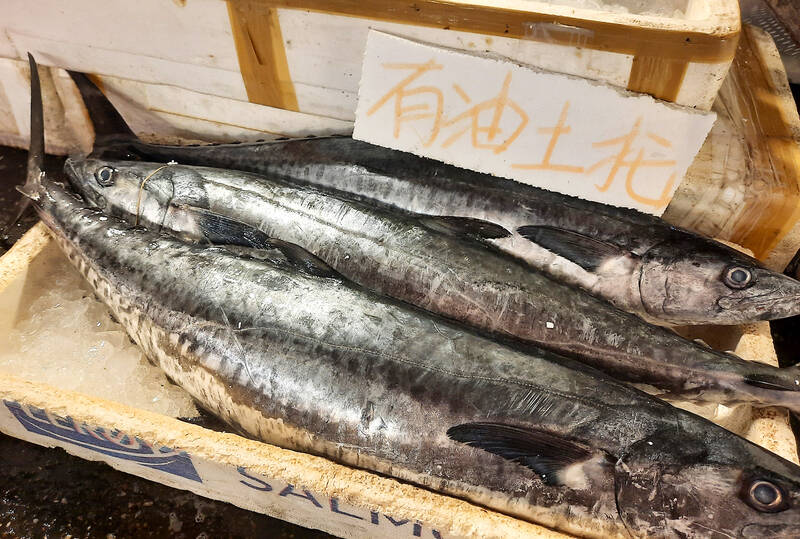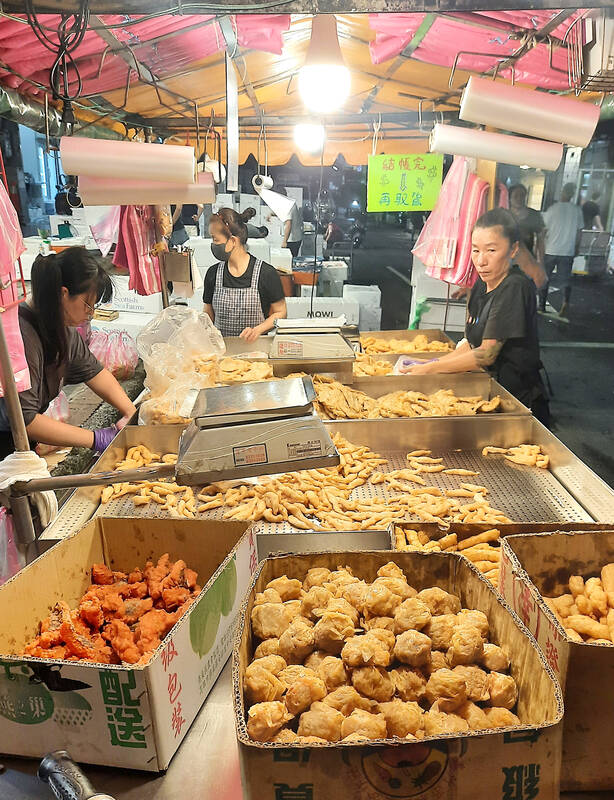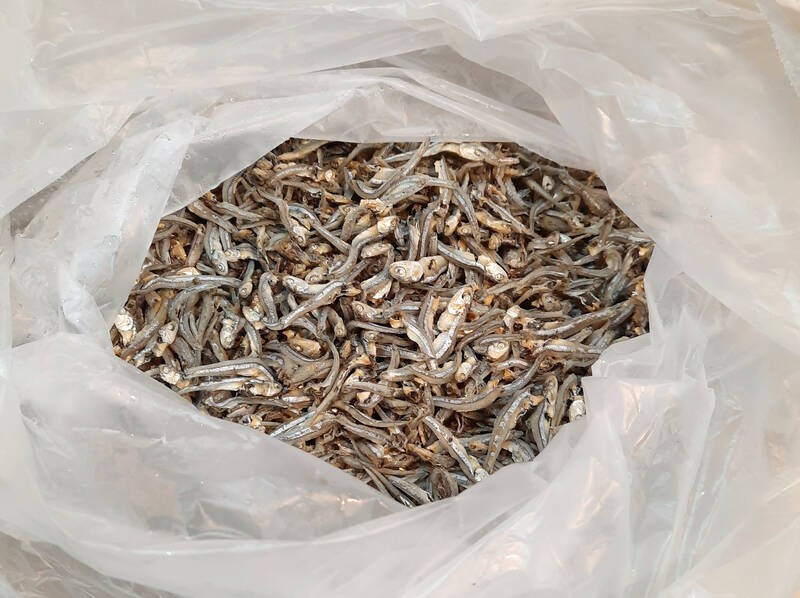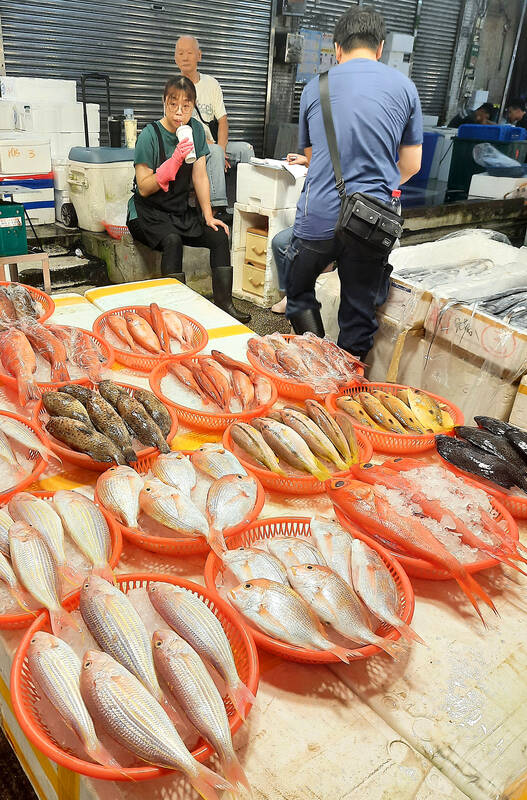Taiwan is one of the world’s greatest per-capita consumers of seafood. Whereas the average human is thought to eat around 20kg of seafood per year, each Taiwanese gets through 27kg to 35kg of ocean delicacies annually, depending on which source you find most credible. Given the ubiquity of dishes like oyster omelet (蚵仔煎) and milkfish soup (虱目魚湯), the higher estimate may well be correct.
By global standards, let alone local consumption patterns, I’m not much of a seafood fan. It’s not just a matter of taste, although that’s part of it. What I’ve read about the environmental impact of the seafood industry suppresses my appetite.
Intensive shrimp and prawn farming has destroyed mangrove habitats in Southeast Asia, India and Ecuador. A fifth of what we take from the oceans isn’t even eaten by humans, but converted to feed for fish and livestock farms. Taiwan’s fishing fleet isn’t exactly synonymous with labor rights, to boot.

Photo by Steven Crook
Nonetheless, I’ve always been curious about what people eat and how they obtain their food. So when I heard how interesting Keelung’s Kanziding Fish Market (崁仔頂漁市) is, even if you don’t buy anything, I decided to plan a recent visit to the northern port city around it. This meant booking a hotel within walking distance — and bracing myself for less than a full night’s sleep, because the market’s official operating hours are 1am to 7am Tuesday to Sunday.
DECIPHERING THE NAME
Guessing that the fish market is named for the neighborhood in which it’s held, but noticing that Kanziding (崁仔頂) doesn’t seem to appear as a toponym in any other context, I did some online sleuthing. This is the explanation I found: In Hoklo (commonly known as Taiwanese), kanzi (崁仔) refers to waterside stone steps where fishing boats used to unload, while ding (頂) means “at the top of.” In the old days, the catch would be brought ashore and sold right there.

Photo by Steven Crook
The steps are long gone, and the market now occupies Xiao 1st Road (孝一路), 400m from the railway station. Apart from a few prewar exceptions — and temples, of course — every building in that part of Keelung is a damp-stained walkup encrusted with burglar bars and business signs. The only greenery is mold. Even when the market is closed there’s hardly anywhere to park a motorcycle, let alone a car. I’m glad I don’t live there, yet I find the unrelenting character of central Keelung quite engrossing.
It can be a bit sketchy, too. I hardly ever worry about criminality in Taiwan, but, as I walked the 750m from my hotel to the market at a quarter past one in the morning, I made a point of avoiding the darkest shadows.
En route, I saw a parked squad car, near which two officers were assisting (or maybe arresting) an older man. Soon enough I was on the edge of the market, where young men were hauling tubs of crushed ice and arranging styrofoam boxes of fish. It was already crowded, and over the next hour even more people arrived.

Photo by Steven Crook
I’d read that most of the selling is done by Dutch auction, but given the speed at which vendors rattled through transactions, and the fact that almost everyone was speaking Hoklo, it was impossible for me to understand in which direction the asking price moved. But I did notice that, rather than quote by Taiwanese pound (jin, 斤; 600g) or kg, bidding sessions were for particular lots — typically a shallow basket, held by the auctioneer or his assistant, on which several fish were arrayed.
And when I say fish, I mean fish. Kanziding isn’t a general seafood market like Budai (布袋) in Chiayi County (see “There’s something fishy about Budai” in the Oct. 18, 2019 Taipei Times). I saw some crustaceans and shellfish, one vendor who was selling seaweed and a truck from which three women hawked fish cakes, tempura and other processed delights. But that was about it when it came to non-fish options.
And when I say “his assistant,” not “their assistant,” it’s because there’s a very obvious gendered division of labor. Men do the selling and laboring. Women count money and use pen and paper to keep track.

Photo by Steven Crook
AN OCEAN’S WORTH OF VARIETY
By half past two, apron pockets were bulging with cash. But there’s little risk of robbery. Even if a thief managed to grab a fistful of takings, the sheer density of the crowd would stop him getting away.
Identifying imported salmon and salted mullet roe (karasumi, 烏魚子) was easy enough, and one name I recognized was narrow-barred Spanish mackerel (labeled 有油土托 in the market, elsewhere often called tutuo, 土魠). I live in Tainan, where thick soup containing mackerel fritters (土魠魚羹) is a local delicacy.

Photo by Steven Crook
No more than half of what I saw being sold was labeled in any way, and I had to research some of those names after getting home.
Bags marked miaopu (鱙鯆) contained small, dried fish. This term, I discovered, refers not to a single species, but rather to the larvae and juveniles of one of the 16 genera of anchovies. When finding that out, I also learned that the Ministry of Agriculture’s Fisheries Agency prevents overexploitation of this resource by banning summertime fishing and imposing limits on both the number of vessels and how much they can catch.
From what I’ve read, the market is a good place to find Japanese sawtail (多板盾尾魚; informally 黑豬哥, “black pig brother”), spotted knifejaw (斑石鯛), and white pomfret (白鯧魚). There’s also ayu sweetfish (香魚), a coastal/estuary species; pollution drove the native subspecies to extinction in the late 1960s, but it was successfully reintroduced from Japan in the 1990s.
I was back in my hotel bed by three, and got enough shut-eye to make full use of the following day. Was the market worth disrupting my sleep? Without hesitation, I’d say yes.

Exceptions to the rule are sometimes revealing. For a brief few years, there was an emerging ideological split between the Democratic Progressive Party (DPP) and Chinese Nationalist Party (KMT) that appeared to be pushing the DPP in a direction that would be considered more liberal, and the KMT more conservative. In the previous column, “The KMT-DPP’s bureaucrat-led developmental state” (Dec. 11, page 12), we examined how Taiwan’s democratic system developed, and how both the two main parties largely accepted a similar consensus on how Taiwan should be run domestically and did not split along the left-right lines more familiar in

As I finally slid into the warm embrace of the hot, clifftop pool, it was a serene moment of reflection. The sound of the river reflected off the cave walls, the white of our camping lights reflected off the dark, shimmering surface of the water, and I reflected on how fortunate I was to be here. After all, the beautiful walk through narrow canyons that had brought us here had been inaccessible for five years — and will be again soon. The day had started at the Huisun Forest Area (惠蓀林場), at the end of Nantou County Route 80, north and east

Specialty sandwiches loaded with the contents of an entire charcuterie board, overflowing with sauces, creams and all manner of creative add-ons, is perhaps one of the biggest global food trends of this year. From London to New York, lines form down the block for mortadella, burrata, pistachio and more stuffed between slices of fresh sourdough, rye or focaccia. To try the trend in Taipei, Munchies Mafia is for sure the spot — could this be the best sandwich in town? Carlos from Spain and Sergio from Mexico opened this spot just seven months ago. The two met working in the

This month the government ordered a one-year block of Xiaohongshu (小紅書) or Rednote, a Chinese social media platform with more than 3 million users in Taiwan. The government pointed to widespread fraud activity on the platform, along with cybersecurity failures. Officials said that they had reached out to the company and asked it to change. However, they received no response. The pro-China parties, the Chinese Nationalist Party (KMT) and Taiwan People’s Party (TPP), immediately swung into action, denouncing the ban as an attack on free speech. This “free speech” claim was then echoed by the People’s Republic of China (PRC),